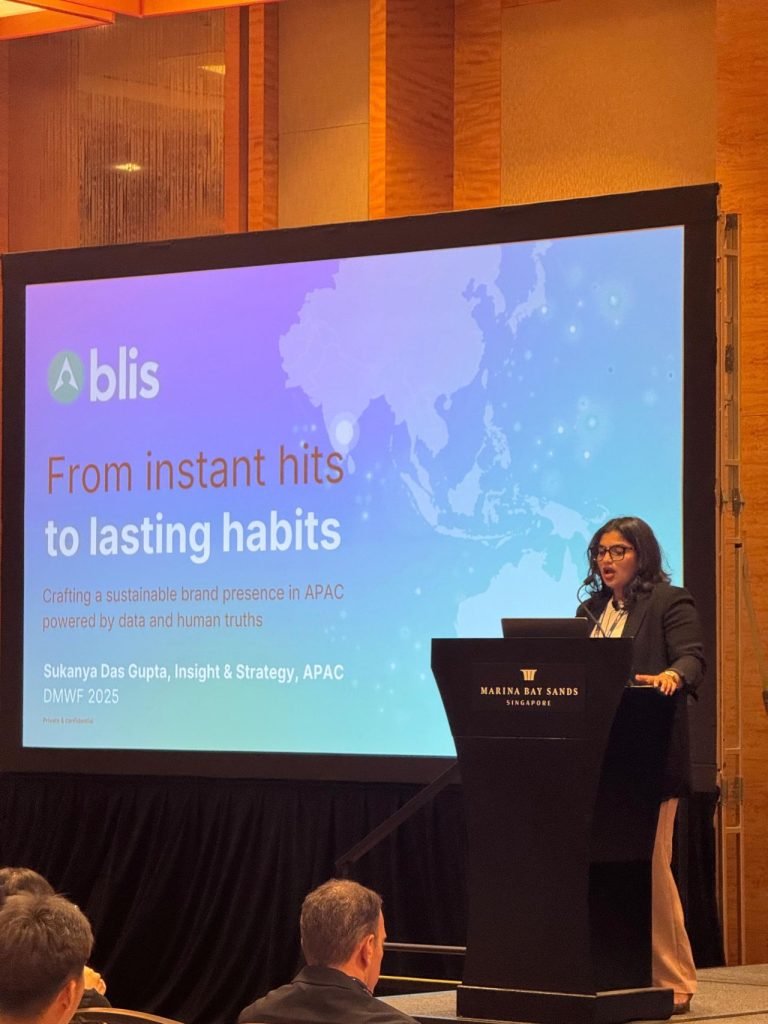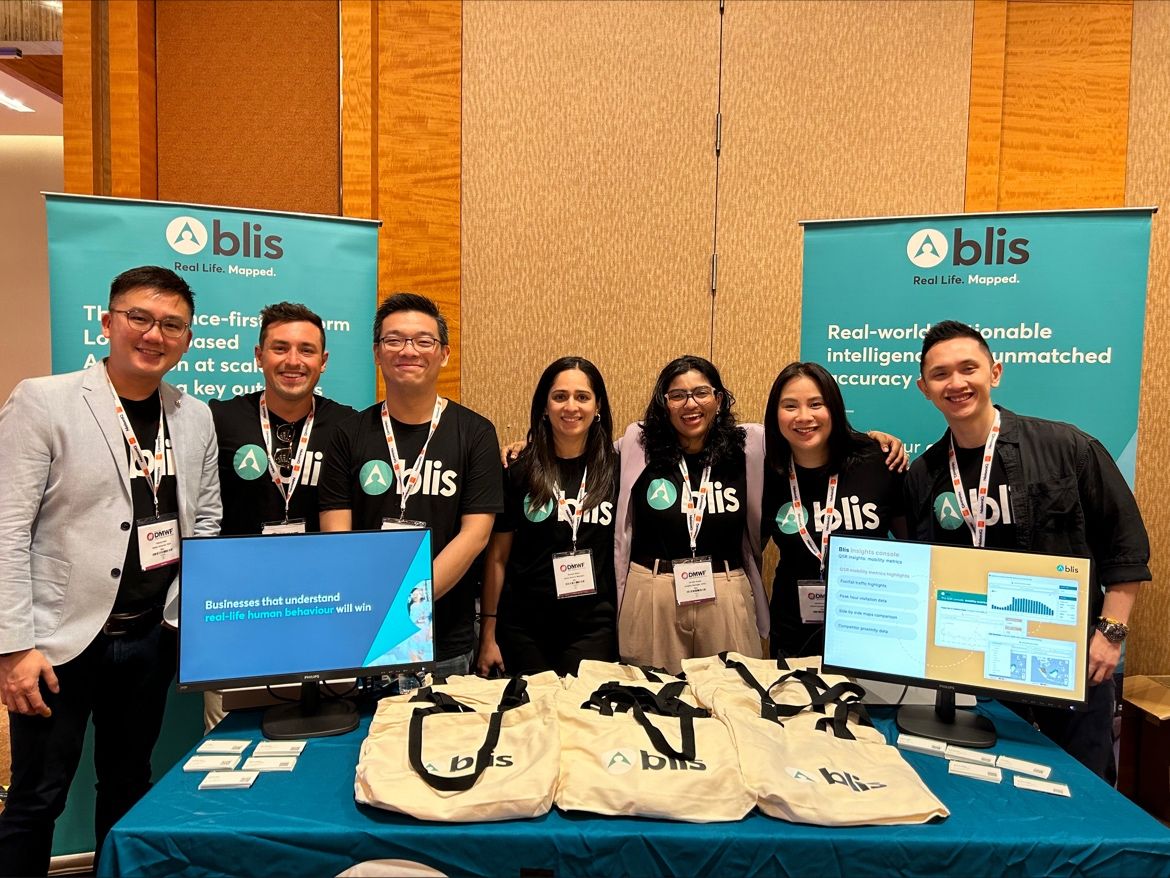- Consumer behaviour analysis shows decisions happen in community spaces outside stores.
- Consideration moments matter more than transactions.
- Successful APAC marketing requires cultural relevance not overwhelming digital noise.
“We’re not goldfish. We have attention when we want to have attention.” With this declaration at DMWF Asia, Sukanya (Su) Das Gupta, Blis APAC’s senior insights manager, addressed conventional marketing wisdom.
As brands try to capture ever-diminishing attention spans, Das Gupta offered a refreshing counter-narrative: marketers are drowning in data while missing the human stories behind consumer behaviour analysis.
In her day one session titled, “From instant hits to lasting habits: Crafting sustainable brand presence in APAC,” Das Gupta challenged marketers to move beyond quick wins and focus on building genuine connections that endure.

Humanising data: beyond numbers and statistics
Das Gupta challenged the reductive view of data science, emphasising that effective marketing requires seeing beyond raw numbers to understand human emotions and decision-making patterns. “Data isn’t just numbers,” Das Gupta said. “It’s been so reductive because everybody likes ‘data science’ and ‘data analysis.’ It’s human emotions, and it’s not rational because externalities push people to make these decisions.”
Her team’s consumer behaviour analysis for a QSR brand in Malaysia revealed three important facts that transformed their approach:
- Decisions happen outside the store: Das Gupta’s team discovered that purchasing decisions weren’t primarily made at the point of sale as commonly assumed. “The decisions were happening outside of the store. They were happening in neutral spaces of community,” she explained. The insight prompted the brand to shift its messaging strategy to target consumers during everyday interactions with peers and family rather than focusing exclusively on in-store promotions.
- Consideration trumps transaction: The data revealed that the psychological journey leading to the purchase was far more influential than the purchase moment itself. “The moments of consideration mattered so much more than moments of transaction,” Das Gupta said. Consumers’ consideration of a purchase was much more important than the moment they were buying.” Even for impulse-driven QSR products like pizza or burgers, consumers were making evaluations well before entering stores, and that suggested brands need to invest in nurturing consideration rather than merely optimising transactions.
- Context drives behaviour: The most surprising finding was how the brand’s contextual positioning directly influenced consumer response. “When the brand shifted its context slightly, then behaviour started to shift. It was really about how the brand reacted to everything versus how audiences reacted,” Das Gupta said. By reframing its messaging to acknowledge consumer hesitations rather than simply pushing products, the QSR brand saw dramatic improvements in engagement.
The brand saw a dramatic turnaround, shifting from short-term firefighting to consistent, long-term engagement. “Instead of having a campaign once every quarter, we said, let’s try to keep it monthly. Let’s make it more realistic. It’s not a sprint, it’s a marathon,” she noted.
The marathon mentality represented a fundamental shift in campaign philosophy. Das Gupta explained that their initial burst campaign had produced an unsustainable 73% increase in exposure. Rather than celebrating this artificial spike, her team recognised the danger of such volatile results and recalibrated toward steady, incremental growth.
“We steadied it,” she said, describing how the team replaced infrequent high-intensity campaigns with consistent monthly touchpoints. The approach proved more sustainable and gradually built consumer trust through reliable, predictable brand interactions. It allowed attention, awareness, and consideration to build over time rather than attempting to force immediate results.
The APAC challenge: Why Western formulas fail
Das Gupta highlighted Western brands’ common mistakes when entering APAC markets, noting the region’s extreme fragmentation and cultural diversity. “When Western brands come in, they believe what’s worked in the US and the UK works beautifully in APAC. And I don’t think they could be more mistaken. You can’t take something that works elsewhere and fit it in APAC. It’s really that simple.”
She cited a cautionary example of an FMCG brand that tried to use a swimsuit-themed advertisement created for US and European markets in Bangladesh, resulting in cultural backlash. While localisation is widely recognised as essential, Das Gupta acknowledged the challenges: “It becomes a matter of cost and time investment. It’s always easier to try your luck.” She stressed that successful brands invest in understanding local nuances: “You have to understand, this is all behavioural economics. People are not rational beings. So you need to understand what triggers their irrationality.”
Subtle impressions win in a noisy digital world
Das Gupta also made a counterintuitive argument for subtlety over attention-grabbing tactics in today’s digital environment. “Look at brands everywhere in any Asian market. You see a giant billboard. You drive 200 metres; you see the same giant billboard with the same creative, same influencer, same tagline, same font, and same background. Are you registering the brand, or have you just ignored it?” she asked.
She advocated for “small, subtle touches” that embed brands in consumer memory, citing Netflix’s distinctive sound for example: “[The] Netflix jingle became a Netflix jingle because it was only there before a Netflix movie started playing. It was not because every brand was blasting it.” The approach requires patience from stakeholders expecting immediate ROI. “Yes, ROI takes time, but so does anything good,” Das Gupta noted. “Try to lean into patience and consistency. It will never not play.”
Content strategy: relevance over length
Regarding shrinking attention spans, Das Gupta rejected simplistic formulas about content length. “I think it’s very reductive to say that people have less attention. We’re not goldfish. We have attention when we want to have attention,” she stated. Success depends on relevance and storytelling, not arbitrary time limits. “Your story can be five seconds long, it can be 30 seconds long, it can be 15 hours. You convey your message in the story you want to tell and be relevant.”
She referenced PETRONAS’s festive season campaigns in Malaysia and Nike’s inspirational ads as examples of longer content that still captures the audience’s attention because of compelling storytelling. For brands seeking to navigate APAC’s complex markets, Das Gupta’s insights offer a roadmap: humanise your data, respect cultural contexts, maintain subtle consistency, and tell stories that resonate. Simply put, when marketing is approached as behavioural economics rather than just promotion, the results speak for themselves.








